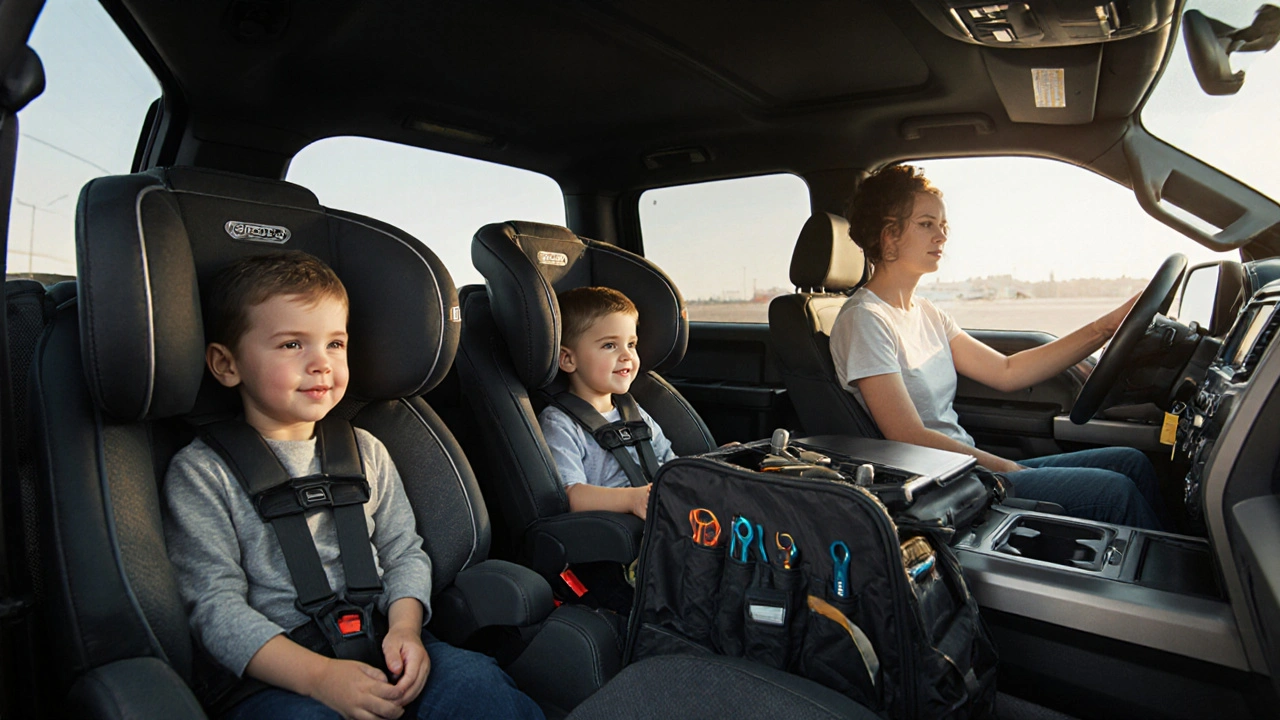When you’re buying a work truck cab size, the interior space configuration of a commercial or heavy-duty pickup truck that determines how many people can ride and how much room is available for tools and gear. Also known as truck cab configuration, it’s one of the most practical decisions you’ll make—more important than engine power or paint color if you’re hauling crew or gear daily. The wrong cab size can mean cramped seats, lost tools, or extra trips. You’re not just buying a truck; you’re buying a mobile workspace.
The three main types of cabs—single cab, the most basic configuration with two doors and seating for two to three people, ideal for solo operators who need maximum bed length, extended cab, adds a small rear seat or jump seats behind the front, giving you extra room for occasional passengers without sacrificing much bed space, and crew cab, a full-size four-door cabin with seating for five or six, perfect for teams or daily passenger hauling—each serve different needs. Single cabs are common on heavy-duty work trucks like the Ford F-250 or Ram 3500 because they give you the longest possible bed for hauling long materials. Extended cabs are the middle ground: enough room for two extra people or gear behind the front seats, but not as wide or comfortable as a crew cab. Crew cabs are the go-to for contractors, utility crews, and anyone who regularly rides with others. They’re also the most popular for families who need a rugged truck but don’t want to sacrifice backseat space.
Here’s what you’re really choosing: space vs. utility. A crew cab might look bigger and feel more comfortable, but it cuts into your bed length and adds weight, which lowers fuel economy and towing capacity. A single cab gives you 10-15 extra inches of bed space, which could mean the difference between fitting a 12-foot ladder or needing a trailer. And if you’re using your truck for construction, landscaping, or farming, you might care more about how many toolboxes fit in the bed than how comfy the backseat is. But if you’re driving kids to soccer practice after a job site, or shuttling crew members daily, the extra room in a crew cab isn’t a luxury—it’s a necessity.
Don’t forget to check the interior width and headroom, too. Some manufacturers label their cabs the same way, but the actual space inside can vary by several inches. A 2018 Ram 1500 crew cab feels roomier than a 2018 Chevrolet Silverado crew cab, even if both are listed as "full-size." Test-sitting with your gear is the only real way to know. Bring your helmet, boots, and tool belt. Sit in the back with your knees bent. See if you can reach the door handle without stretching. These small details matter more than the brochures say.
What you’ll find below are real-world insights from people who’ve lived with these choices. From mechanics who swear by single cabs for daily hauling, to landscapers who switched from extended to crew cabs after a back injury, to fleet managers who saved thousands by optimizing cab size across their entire truck fleet. No fluff. No marketing hype. Just what works—and what doesn’t—when you’re on the clock and need your truck to work as hard as you do.
Posted by
Liana Harrow
15 Comments

Crew cabs offer more space for families and work teams, while extended cabs save money and add bed length. Learn which pickup truck cab type fits your real-life needs-kids, tools, parking, and resale value included.
read more